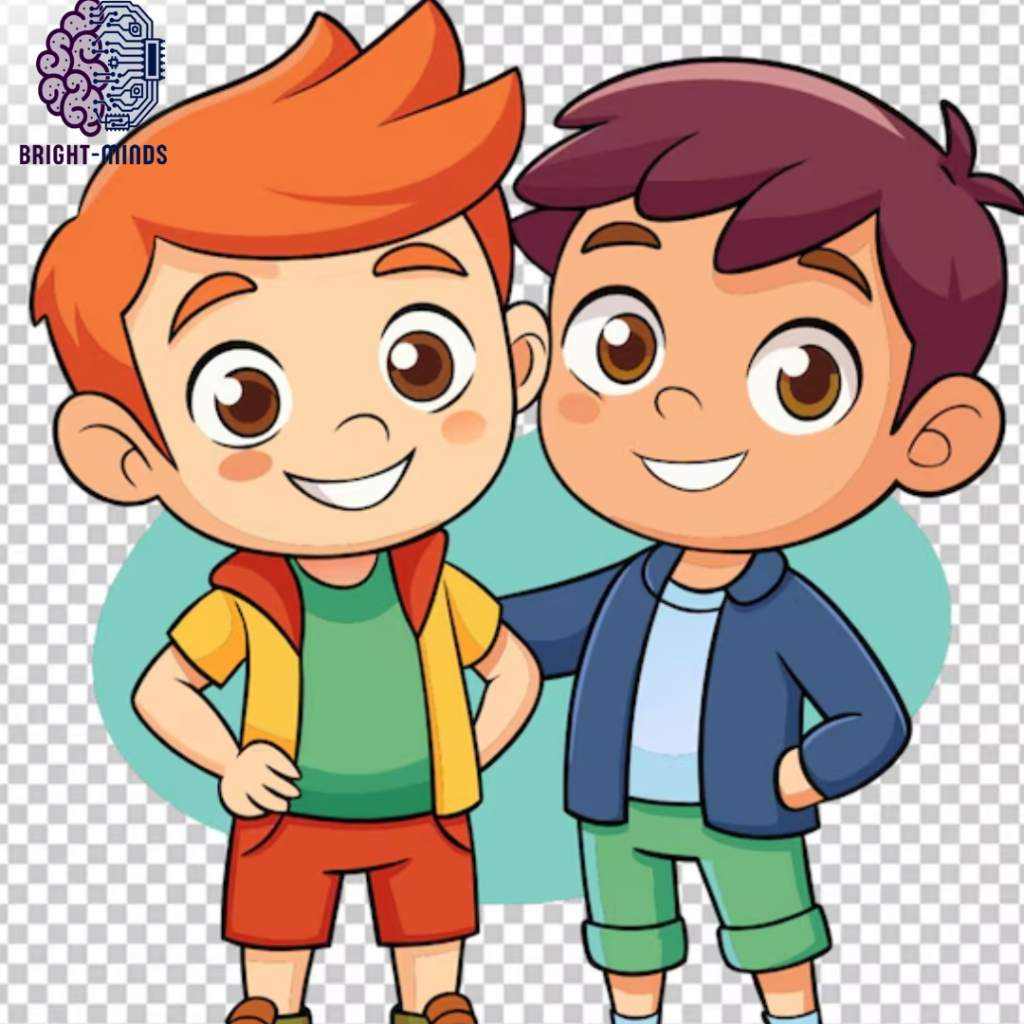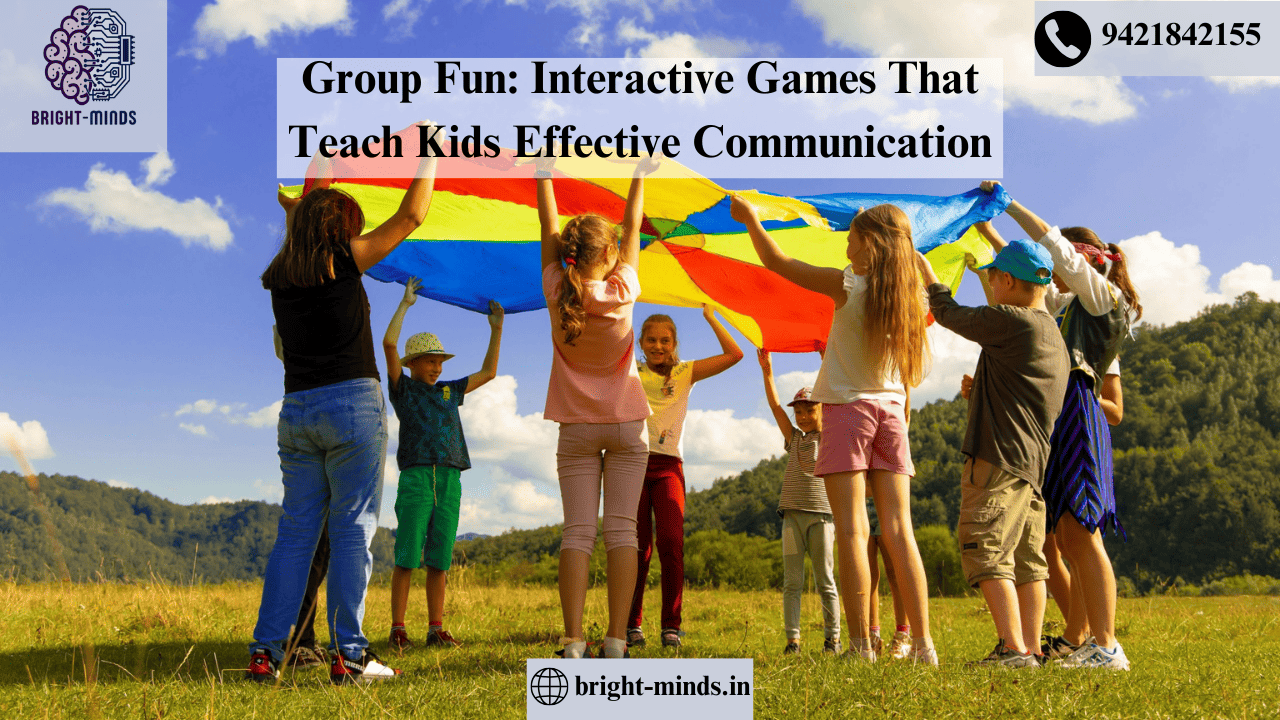Effective communication is a fundamental skill that children need to develop to navigate the world around them. Whether it’s interacting with peers, teachers, or family members, the ability to express thoughts, listen actively, and work cooperatively is essential for success in social, academic, and personal contexts. One of the best ways to teach kids how to communicate effectively is through play, particularly group games. Group activities are fun, engaging, and provide an opportunity for children to practice both verbal and non-verbal communication skills.
In this blog, we’ll explore several interactive games that can help kids improve their communication abilities. These games encourage active listening, clear expression, collaboration, and problem-solving—all while having a great time. Whether you’re a parent, teacher, or caregiver, these games can be incorporated into daily routines, classrooms, or outdoor play sessions to promote positive communication skills.

1. Telephone Game (Chinese Whispers)
The Telephone Game, also known as Chinese Whispers, is a classic game that helps children practice listening, speaking clearly, and remembering information. It’s simple, fun, and promotes communication in a playful setting.
How to Play:
- Arrange the children in a circle.
- Whisper a short sentence or phrase into the ear of the first player. For example, “The brown dog chased the red ball.”
- The first player then whispers what they heard into the ear of the next player.
- The game continues until the last player, who says aloud what they heard.
- The last player’s sentence is often hilariously different from the original, showcasing how communication can change as information is passed along.
Benefits:
- Promotes active listening, as children must pay attention to what is said in order to pass on the message accurately.
- Encourages clear and concise speaking, as children must repeat what they hear exactly.
- Teaches patience and the importance of clear communication in avoiding misunderstandings.
2. Charades
Charades is a timeless game that challenges children to communicate without words, relying on body language, facial expressions, and gestures. It helps children develop non-verbal communication skills, which are just as important as verbal communication.
How to Play:
- Write a list of actions, animals, or objects on slips of paper. Each child will draw one slip of paper.
- Without speaking, the child must act out what is on the slip of paper while the others try to guess what it is.
- The child acting out the word or phrase can use gestures, facial expressions, and movement, but cannot speak or make sounds.
- The game continues with each child taking turns to act and guess.
Benefits:
- Encourages children to use their bodies to communicate, helping to develop non-verbal cues like gestures and facial expressions.
- Promotes teamwork and collaborative problem-solving as children work together to guess the correct word or phrase.
- Improves social skills by teaching kids how to express themselves without using words and how to interpret others’ expressions.
3. Pictionary
Pictionary is a visual game that combines drawing and guessing. It helps children improve their ability to describe things in a clear and effective manner, while also honing their creative and problem-solving skills.
How to Play:
- Divide the children into two teams.
- One player from a team draws a picture of an object, action, or phrase from a card or list without using any letters or numbers.
- The other players on their team must guess what the drawing represents within a time limit.
- The team earns points for each correct guess.
Benefits:
- Encourages clear thinking and effective communication, as children need to draw accurately and describe objects or actions without speaking.
- Enhances creativity and problem-solving skills as children come up with ways to convey concepts visually.
- Fosters teamwork, as team members need to communicate effectively and collaborate to make guesses.
4. The Listening Game
Active listening is a critical component of effective communication, and this game is specifically designed to develop that skill. The Listening Game encourages kids to listen carefully to instructions and respond appropriately.
How to Play:
- Provide a series of simple, multi-step instructions to the children. For example, “Clap your hands twice, then jump in place, and finally touch your toes.”
- Children must listen carefully to each instruction and perform the actions in the correct order.
- You can increase the complexity of the instructions as children become more proficient at following them.
Benefits:
- Improves active listening skills, which are key to understanding and responding to communication.
- Enhances memory retention, as children must recall each instruction in sequence.
- Teaches focus and patience, as children need to concentrate on what is being said to avoid mistakes.
5. Group Storytelling
Group storytelling is a collaborative activity where children work together to create a story. This game encourages imagination, turn-taking, and the ability to listen and build upon others’ ideas.
How to Play:
- Start by saying the first sentence of a story. For example, “Once upon a time, there was a dragon who lived in a big castle.”
- The next child adds a sentence to continue the story. For example, “The dragon loved to fly over the forest every day.”
- Each child takes turns adding a sentence, gradually building the story as they go.
- The game ends when the story reaches a natural conclusion.
Benefits:
- Encourages creativity and collaboration as children build a story together.
- Enhances verbal communication and storytelling skills.
- Teaches turn-taking and active listening, as each child must listen to the previous sentence before adding their own.
6. Simon Says
Simon Says is a simple game that teaches children to follow directions and listen carefully to verbal cues. It’s a great way to promote active listening and attention to detail.
How to Play:
- One child is chosen to be “Simon,” and they give commands to the other players. For example, “Simon says touch your nose.”
- The players must follow the command only if it is preceded by the phrase “Simon says.” If Simon gives a command without saying “Simon says” and a player follows it, they are out.
- The game continues with Simon giving new commands and players responding appropriately.
Benefits:
- Enhances listening skills, as children need to pay attention to whether the command begins with “Simon says.”
- Improves concentration and attention to detail.
- Teaches children the importance of following instructions and paying attention to context.
7. Build a Tower Together
This collaborative game requires teamwork, problem-solving, and communication. It’s a simple yet effective way to teach children how to work together and express ideas clearly.
How to Play:
- Provide the children with materials like building blocks or Legos.
- Ask them to work together to build the tallest tower they can within a set amount of time.
- Children must communicate with each other to decide on the best strategy for building the tower, taking turns to add blocks.
Benefits:
- Encourages teamwork and collaboration as children must work together to achieve a common goal.
- Develops problem-solving skills, as children figure out how to balance and stack the blocks.
- Enhances communication and negotiation skills, as children express their ideas and listen to others.
8. What’s Missing?
This memory game is a fun way for children to practice observation and communication skills. It encourages them to pay attention to details and recall information, which are essential components of effective communication.
How to Play:
- Place a variety of objects on a table and allow the children to observe them for a few minutes.
- Ask the children to close their eyes while you remove one object.
- When they open their eyes, they must figure out what is missing.
- As the game progresses, increase the number of objects or make the changes more subtle.
Benefits:
- Improves observation and memory skills, which are critical for effective communication.
- Enhances attention to detail and the ability to recall important information.
- Teaches children to focus and think critically.
9. Emotion Charades
This variation of charades helps children understand and express emotions. It encourages empathy and the ability to communicate non-verbally, which are essential for understanding and interacting with others.
How to Play:
- Write a variety of emotions on slips of paper (e.g., happy, sad, angry, surprised).
- Children take turns drawing a slip of paper and acting out the emotion without speaking.
- The other children must guess the emotion based on the child’s facial expressions and body language.
Benefits:
- Helps children understand and express different emotions, improving emotional intelligence.
- Encourages empathy, as children must interpret and express emotions in a way that others can understand.
- Develops non-verbal communication skills, which are important in social interactions.
Conclusion
Interactive games are an excellent way for children to develop effective communication skills in a fun and engaging manner. Whether it’s practicing active listening, expressing ideas clearly, working as a team, or understanding emotions, these games provide children with valuable opportunities to improve their communication abilities. By incorporating these games into daily routines or group activities, kids can develop the confidence and skills they need to communicate effectively in all areas of life. So, gather a group of kids, pick a game, and watch them learn and grow through the power of play!
also read

